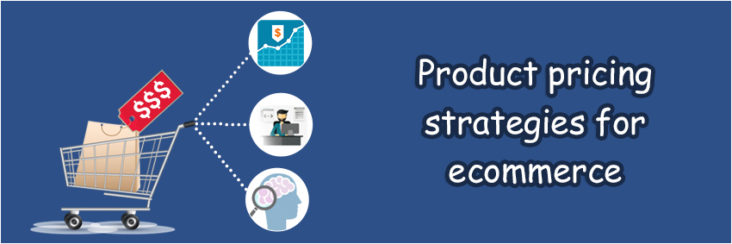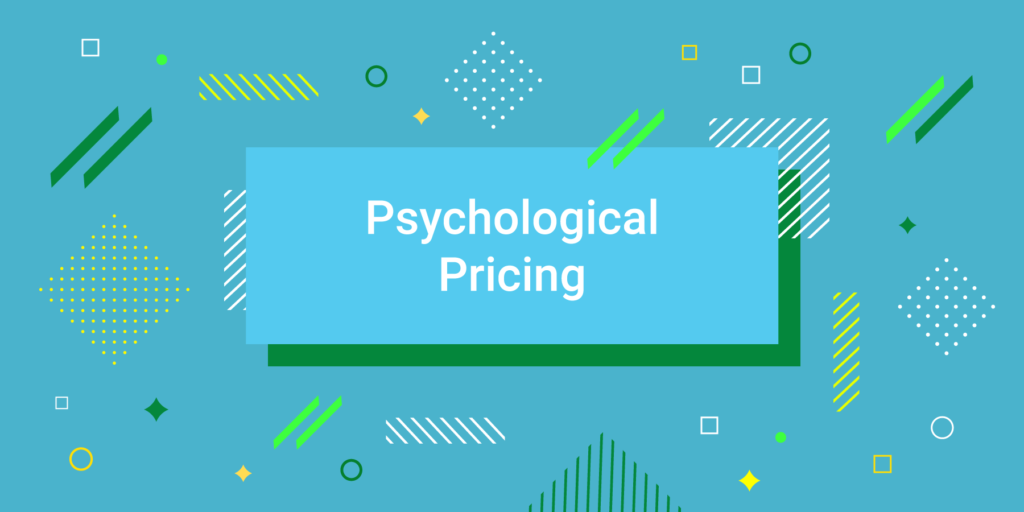

Product pricing strategies for e-commerce

Running short of time? Get PDF of the blog in your mail.
Pricing remains one of the most crucial factors that dictate sales. A good price for a product is not hard to guess. Customers while browsing the items online, often make quick assumptions about pricing, and if you have not taken their psyche into consideration while pricing, you are going to lose lots of potential buyers.
An overpriced strategy can ruin your brand. You have to be dead accurate while pricing the products. Usually once a buyer finds their choice of product, the next thing they see is its price. Hence you have got to hook them in while you have the chance. Pricing matters a lot and these facts don’t lie.
- Price has been the most important factor while making purchase decision according to 60% of the online shoppers. This figure is even higher in emerging ecommerce markets.
- More than 90% of online shoppers spend their time in finding the most amazing deal and offer for their choice of product. More than 10 minutes per purchase.
- Around 20% of the entire ecommerce traffic comes from price comparison shopping engines. The share is even higher for categories such as electronics.
- 54% of shoppers will buy their abandoned cart items if they are offered a lower price.
- 67% of online shoppers claim that they would prefer to buy from another ecommerce shop that offers them a better deal and slashed prices.
Pricing a product has more science to it, than it appears. There are few approaches you can use to address the pricing of products. It will be a part of your marketing strategy and boost the conversion rates too at the same time.
Cost based pricing
This is the most simple, widely used, and popular approach to pricing. It dates back to all the times we have a record of. You don’t need to invest in understanding the psyche of customers, or dig deep into customer insight, or conduct a market research for cost based pricing. This method ensures you a minimum margin chosen by you on the sale of that product. It works with setting the cost incurred for a product (in manufacturing, or procuring), and a minimum profit margin you would like to have on that product. The sum of both is the price you need to set.
The simpler equation is – >
Cost + Desired Margin = Price
Simple enough, but not on grounds. It takes more science plus maths to calculate the cost and even the desired margins. The Cost of product is not limited to the production cost or cost of procuring that item from any third party vendor. Your cost of product will also consist of all the overheads of operational activities divided into smaller units decided by the number of stock you are going to sell. If you had accounting in education, you might have heard about break even cost. This is the cost that best represents your cost of product.
Higher the Profit margins, better for the business. But you can’t sell any item twice or thrice the product cost. Margins hugely depend on the nature of product, competitive landscape, customers to be catered and the industry your product belongs to. If you are dealing in luxury products, where the customers are ready to pay a premium fee, you might put some extra margin. But if you deal in consumer electronics, the margins are very thin, due to a lot of competition and virtue of customers. If you are selling groceries, you have thinner margins, plus discounts.
Competitor based pricing
You keep your pricing similar or little more or little less than your competitors. You have to closely monitor the pricing activities of your competitors. This pricing works when you are offering a similar product to that of your competitor with no differentiators. You also have to make sure, if your competitor has done proper research on the pricing, or is attracting customers at the same price, and doesn’t has any advantage in terms of production cost or margins. For example you can’t compete with an agro product seller, if he has two times your productivity due to better soil.
This strategy has a flaw, that often it leads to a pricing competition better known as race to bottom. When you are competing, you lower the prices and it gets reflected by your competitor, till the point when it becomes no longer feasible to sell the product at reduced prices. Hence it is recommended to use it wisely and not get into an ugly price fight. The objective of this pricing is to be at par with your peers.
Dynamic Pricing
It works parallely with your competitors. You have to be competitive while offering your products. You need to adjust your pricing, if prices of similar products from your competitors fluctuate. To ensure you don’t lose your stand in terms of profits generated, it is advisable to adapt a hybrid strategy where Dynamic pricing works along with cost based pricing, where you have set standards for product cost and margins to be earned. The tip is not to fall off from a certain point where you feel you are not going to generate profits. After all good business is based on profits.
Value based pricing
This pricing strategy depends on the value you tend to deliver to your customers. It depends on what your customers perceive of that value, and what industry you are serving. You might have clear understanding about the value you are going to serve, but then your customers might not agree with you. Hence this strategy works in alignment with your target audience. This strategy involves lots of marketing. You also have to figure out if your customers are happy to pay the price you set, if no what could be the possible situations under which you can change their perception about the product. You have to be research oriented for this.
When value comes into the picture, the price fades away. People in need of a product will understand its value more than others who are not. This is the best part of this strategy, it works well to fetch you a great price without any compulsion on buyers. It happens more often that customers will pay a high price for a product that they feel comes with an irreplaceable value. If your product is unique and caters to all the needs of an ideal customer, you got to adopt value based pricing for it. Value based pricing is truly a win win situation for both buyers and sellers.
Tips on psychological pricing
Pricing is a blend of maths and science. It takes more than calculating the price, to know how to apply marketing while doing so. Starting from Buyer’s Persona, to market research, everything works parallely to come down to the right price.
When it comes to buying an item, our mind perceives its values justification with price, how edged it is with competitors, is it worth the cost, and many other perspectives. Mind is pivotal to understand how you should price your products. Hence we have compiled few psychological tips you can use while you price your items.
- Charm Pricing – It works in numbers, and you will admit it that you have been influenced by it in your past purchases. Seen products with price tags ending with 9’s instead of 0’s. Pricing an item of $20 with $19.99 does works well. This strategy is diamond in the rugs, not adapted by many of the ecommerce companies, and remains less used. Though its proven to yield higher conversion rates.
- Rational Vs. Emotional Pricing – Nature of item you sell should also dictate how it should be priced. There are two kind of psychological purchases, one you make by rationality or logic, the other you make by emotions or feelings. Suppose you are selling a television, buyers will tend to look colors supported, internet connectivity, sound system, screen size, display quality, etc. While pricing such item you have to be dead accurate, like $252 or $347, to justify what you are pricing. On contrary to this, if you are selling a premium furniture, Buyers are not going to weigh it, as its emotionally connected to decor their home. Such items can have roundabout prices like $250 or $400.
- Smaller Fonts – When buyers check an item, they would never like to be bombarded with huge price tags on their face. The key is to keep your prices in smaller fonts. So they could keep their pockets aside for a time, and check other details too. Smaller fonts also convey a hidden message about the value or quality of your product, or fineness it took to create it. So visit your store and figure out how to use smaller fonts for prices.
Conclusion
Pricing of a product should be a holistic approach from an organization’s point of view. The aim should be to boost your conversion rates. Choose the strategy best suited to your products, industry, and organization. Always remember, never to underestimate the value of your product, study the pricing strategies followed by your competitors, and trends in pricing related to your product categories.

